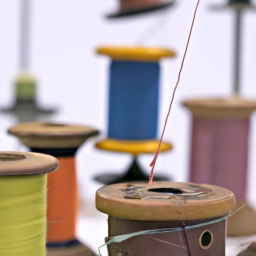
History of Sewing Machine in India

India, a country rich in textiles and embroidery, has a long history of sewing and needlework. However, the invention of the sewing machine revolutionized the way garments and fabrics were produced, bringing efficiency and precision to the process. Let’s delve into the fascinating history of the sewing machine in India.
The Early Years
The first sewing machine was introduced in India during the mid-19th century, a time when manual sewing was the prevalent method in the country. It was a challenging task, often requiring skilled artisans to meticulously stitch intricate designs. The arrival of the sewing machine presented a remarkable opportunity to transform the textile industry.
Initially, sewing machines were imported from Europe and the United States, making them expensive and inaccessible to the masses. However, with the passage of time and the gradual growth of the textile industry in India, local production of sewing machines began.

“The introduction of sewing machines marked a turning point in the history of Indian textiles, bringing efficiency and speed to garment production.”
– Textile historian, Dr. Meera Shah
Indigenous Production
Indigenous production of sewing machines in India gained momentum during the early 20th century. Several local manufacturers emerged, producing affordable machines that catered to the diverse needs of Indian society. These machines varied in design, from the traditional foot-operated models to more advanced electric machines.
One of the significant milestones in the history of sewing machines in India was the establishment of the Sewing Machine Manufacturers Association (SMMA) in the 1940s. This association aimed to regulate the quality and distribution of sewing machines and played a pivotal role in shaping the industry.
The Modern Era
In recent years, the sewing machine industry in India has undergone significant advancements. With the advent of computerized sewing machines, the production process has become even more efficient and precise. These machines offer a wide range of stitching patterns and automate various sewing tasks, reducing human effort.

Today, sewing machines are widely accessible in India, catering to both industrial use and domestic household needs. They have become an essential tool for the vibrant fashion and textile industry in the country.
In Conclusion
The history of sewing machines in India is a testament to the indomitable spirit of human ingenuity. From humble beginnings to modern advancements, these machines have revolutionized the textile industry, enabling mass production and fostering creativity in garment making.
The journey of sewing machines in India continues, constantly evolving and adapting to meet the changing demands of the fashion world, while preserving the rich traditions of Indian textiles.
References:
1. “Textiles in Indian Ocean Societies” by Pedro Machado
2. “Sewing Machines: Their Construction, Adjustment, and Repair” by G.W. Flagg




